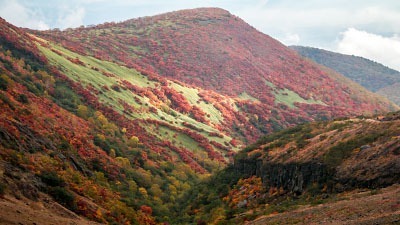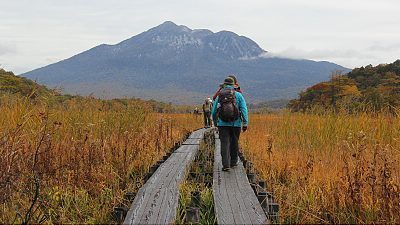Kamikochi: Peak Colors
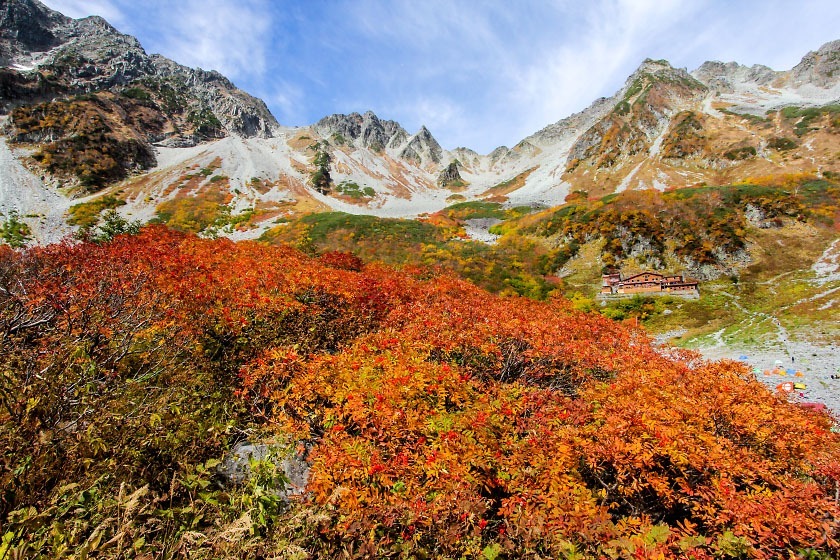
The autumn color season is now in full swing in the high-elevation mountainous areas all across Japan. Thanks to the head start in falling temperatures, these areas are among the first to see the changing colors, usually from late September through mid October.
Of the many great high-elevation autumn color destinations in Japan, Kamikochi in Nagano Prefecture is often considered one of the best places to experience the colors among the mountains. Most visitors to Kamikochi in autumn come to enjoy the changing leaves in mid-to-late October, when the fall colors are at their peak in the lower elevations around the Azusagawa River valley floor (at around 1500 meters above sea level).
But just a couple weeks earlier in early October, the high mountain slopes and valleys (generally above the 2000-meter mark) in the deeper reaches of the national park are where the seasonal action is at, for those willing to hike beyond the main tourist trails and into the mountains.
For this autumn color report, I made my way to Kamikochi and up to one of the highest and most celebrated autumn color spots amongst hikers in Japan, the Karasawa Valley.
Kamikochi
I started my hike where most visitors to Kamikochi begin, at the Kamikochi Bus Terminal. After registering my hiking itinerary at the registration counter (in case I were to need help or rescue), I set off on the main hiking trail that follows the Azusagawa River north towards its source.
At 1505 meters above sea level, the trees and plants along the river were only just beginning to change color, and were still mostly green during my hike.
These lower elevations should start to hit their peak color in a week or two.
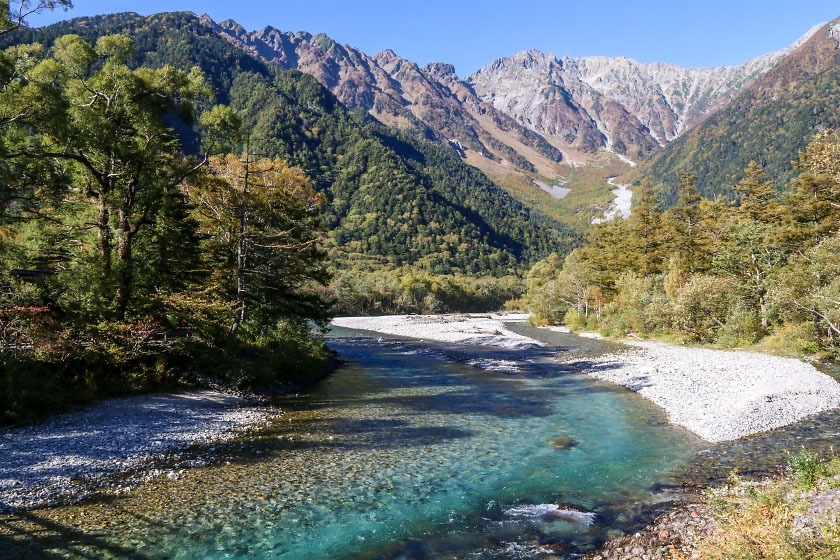
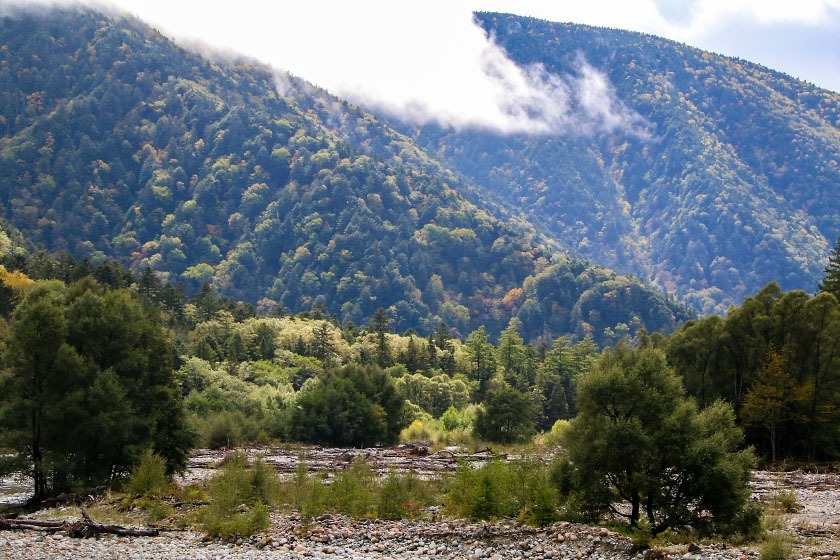
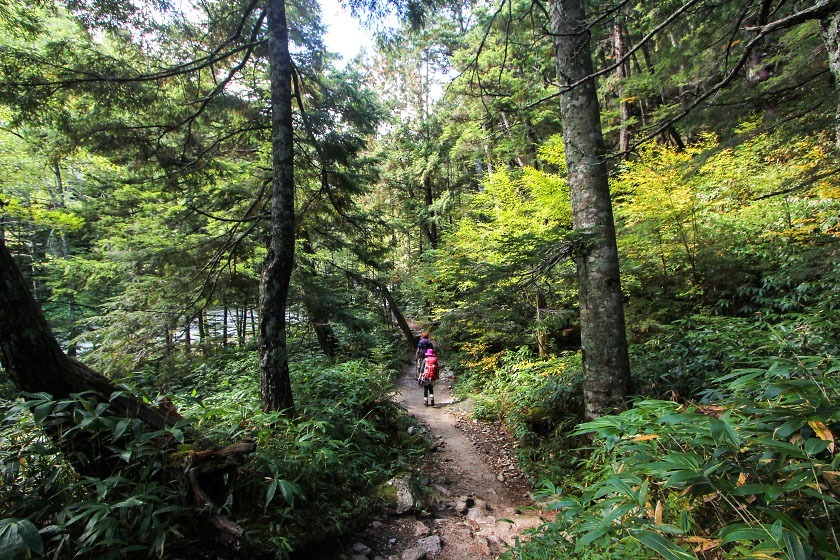
After passing the Tokusawa Lodge, about a 1-2 hour hike from the trailhead, hikers can choose to take a bridge that crosses over the Azusagawa and leads up into the mountains on a trail called the Panorama Course. The Panorama Course quickly gains elevation and winds a slope of the massive Mt. Maehotaka-dake where it leads into a high approach to the Karasawa Valley, affording some gorgeous views along the way.
The autumn colors began to become more and more brilliant as the trail climbed higher, almost at their peak in some places.
Note: The Panorama Course is usually taken as a descent from the Karasawa Valley, as the ascent is steep. A gentler, more commonly-used approach to the Karasawa is to climb up the entire valley itself, starting across the river from the Yokoo Lodge.
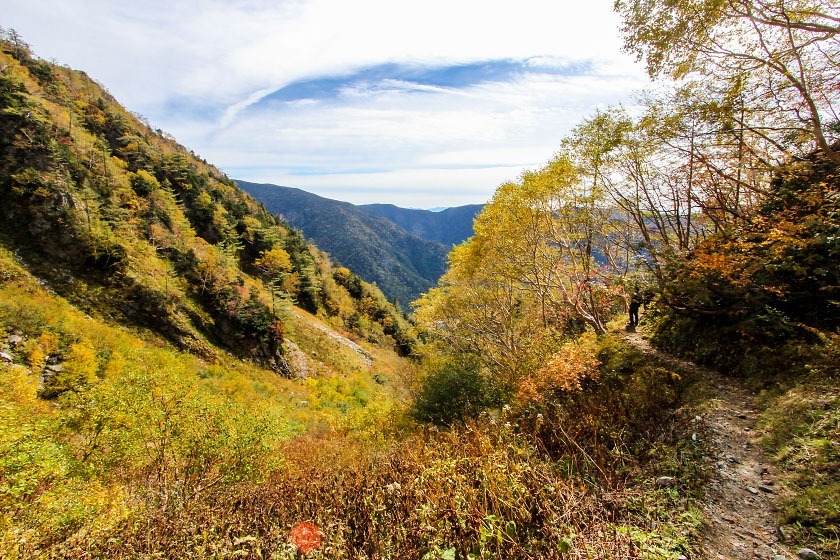
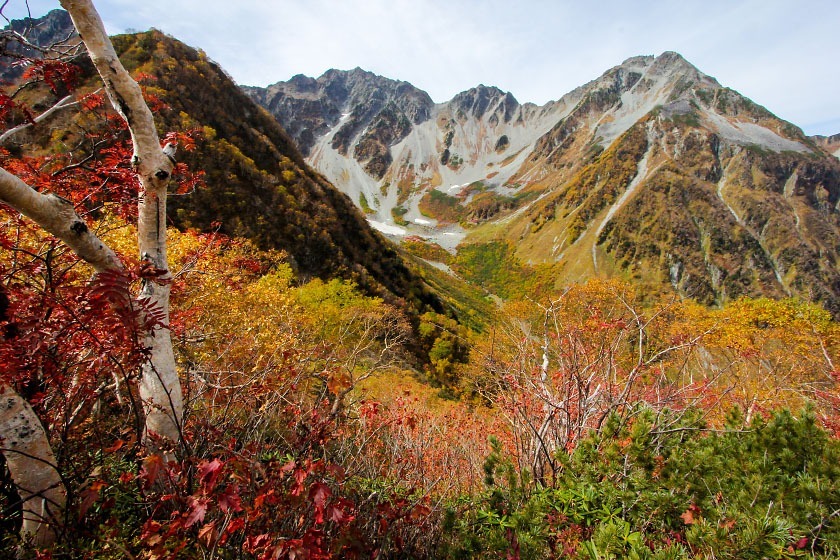
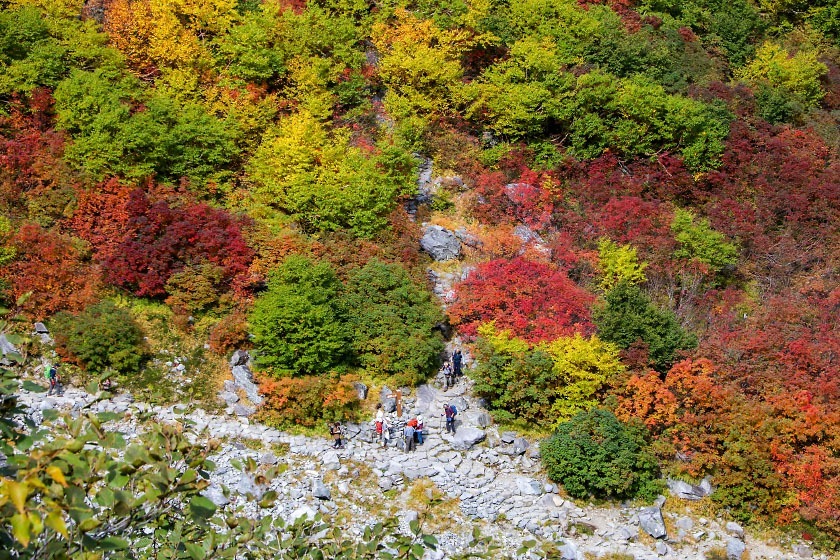
Karasawa Valley
Finally at the Karasawa Valley itself, the autumn colors were at their peak color, and were absolutely stunning.
While many mountain valleys in the Northern Japanese Alps sport plenty of great autumn colors along their slopes, only the Karasawa has the unique location of being nestled against the third highest mountain in Japan, Mt. Okuhotaka-dake (3190 meters). The extreme backdrop and the dense collection of color-changing alpine shrubs and trees makes this colorful valley a special—and popular—place to visit in autumn.
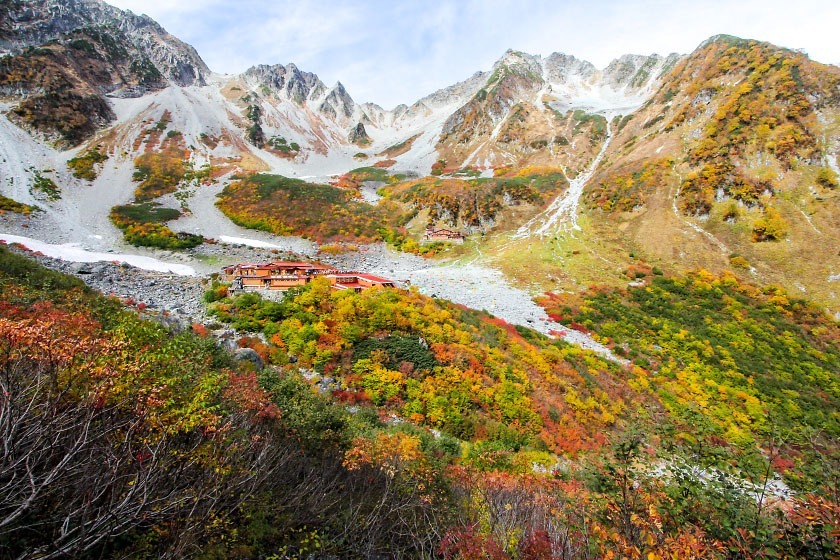
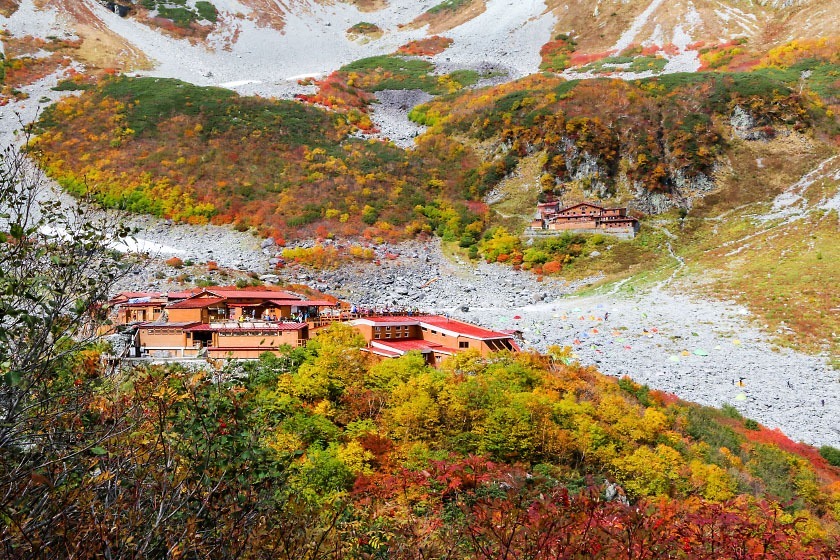
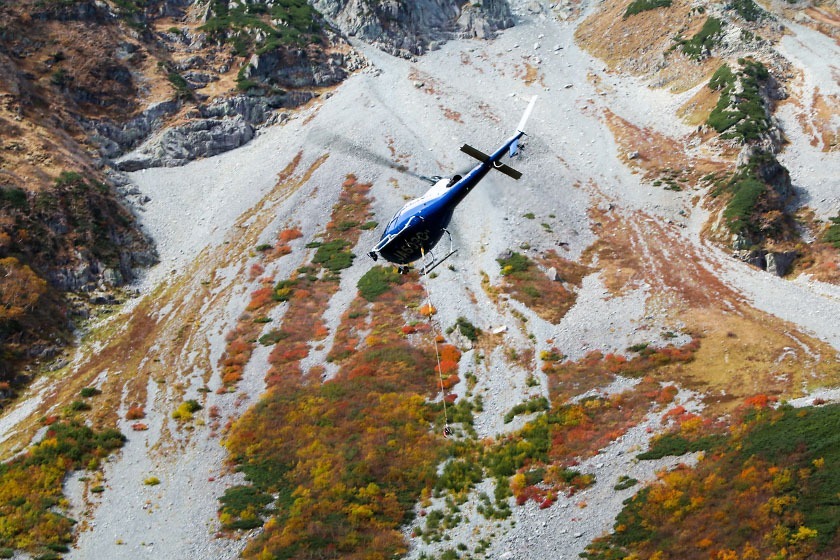
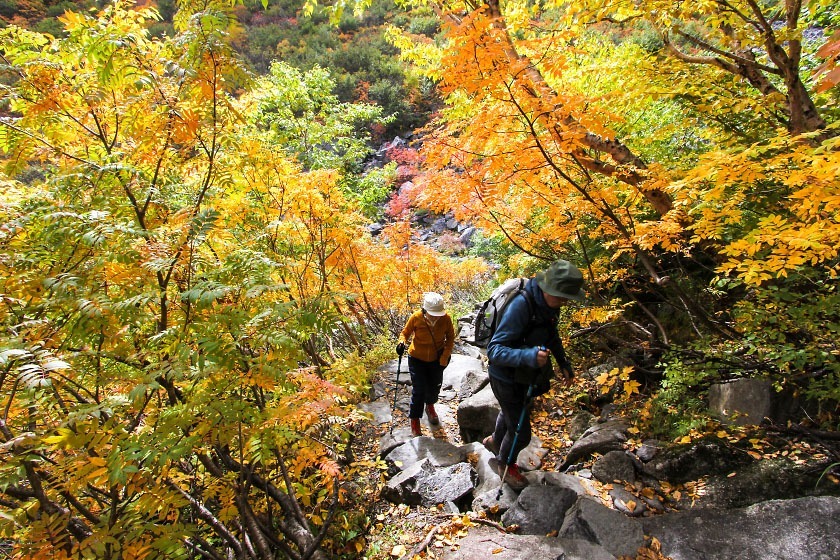
To accommodate the large numbers of hikers who come to the valley (especially at this time of year), two mountain lodges are conveniently located in the valley's prime koyo (autumn color) viewing area: the Karasawa Hyutte and the Karasawa Goya. Both huts can sleep 100-180 hikers (6500 yen no meals; 9500 yen with 2 meals) and also offer camping grounds for those with tents (limited rental tents are also available from Karasawa Hyutte; reservations are required).
As this week and the upcoming three-day weekend are peak autumn color season here, these huts are both running at capacity now, in some cases requiring guests to double up on futons. Be sure to make reservations by phone as early as possible before your hike if staying at either of these huts.
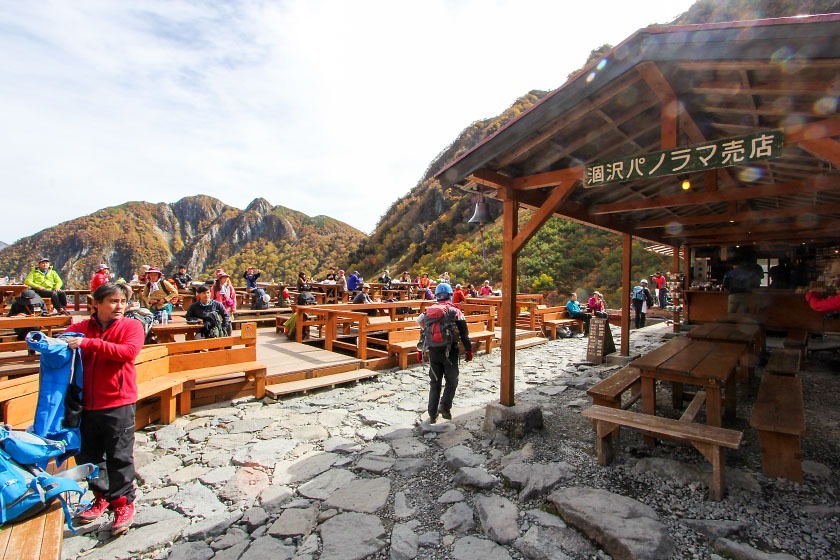
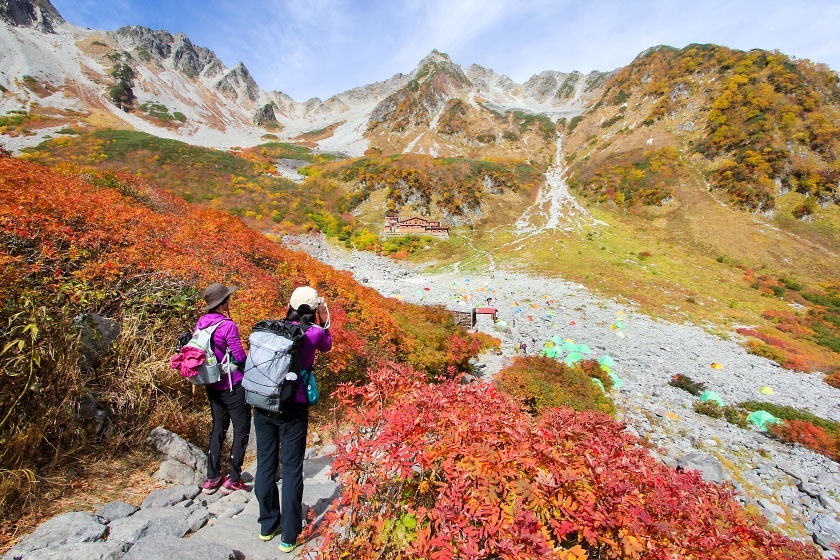
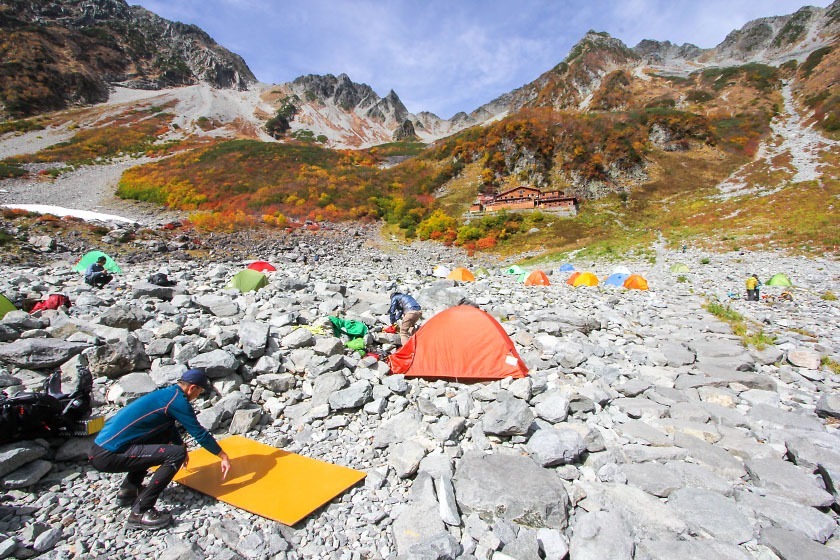
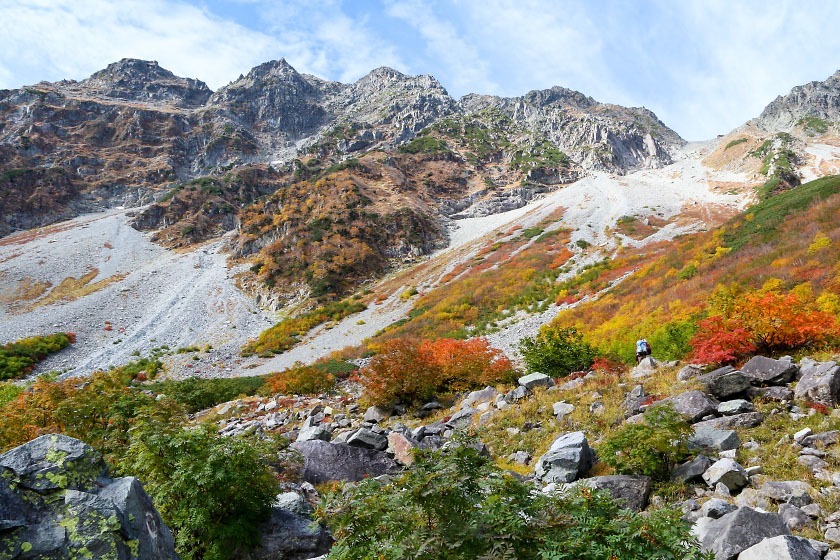
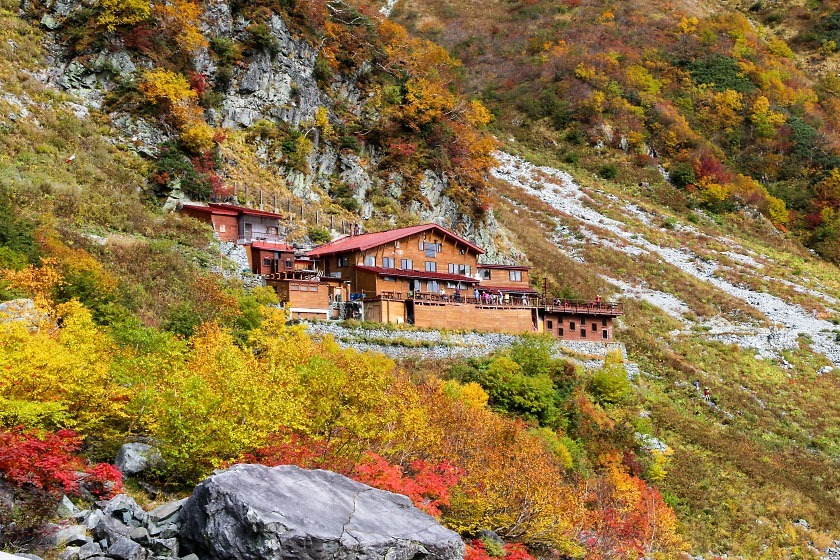
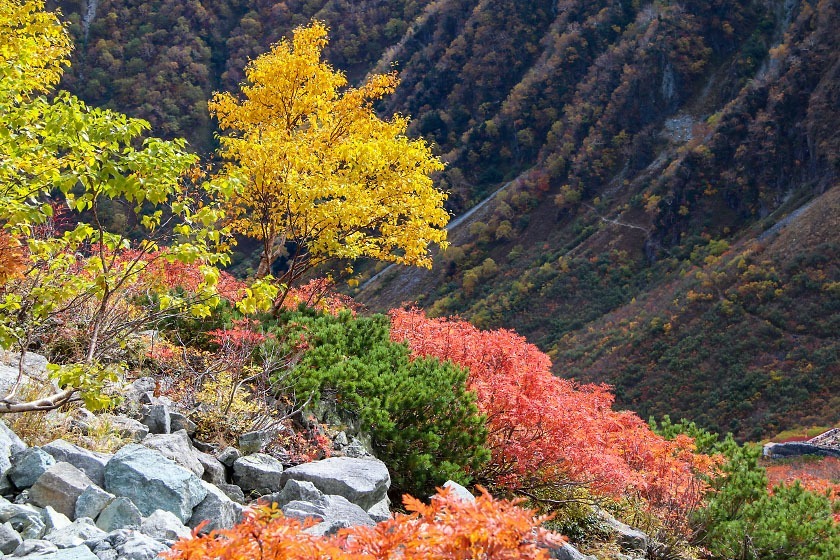
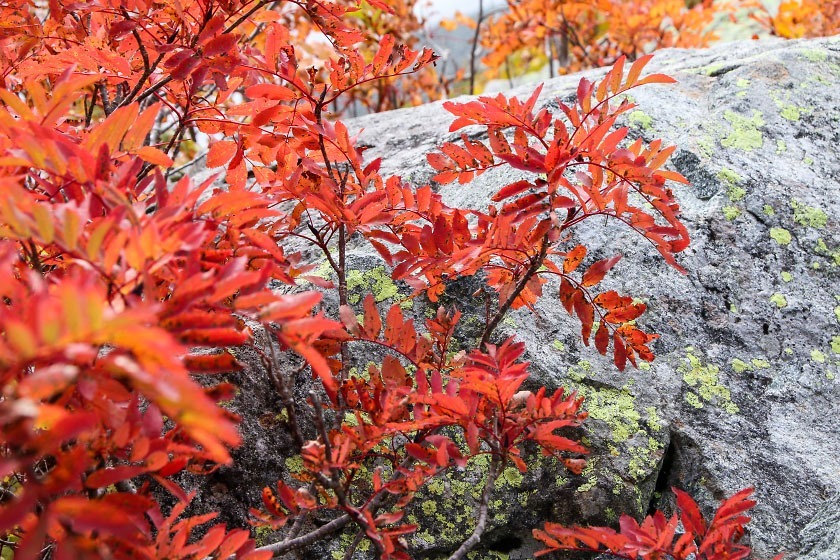
For those looking to explore the area a little further, an excellent option is to simply continue climbing up the valley towards the ridge line of the Hotaka massif. While a steep climb, the views become more and more spectacular the higher you go.
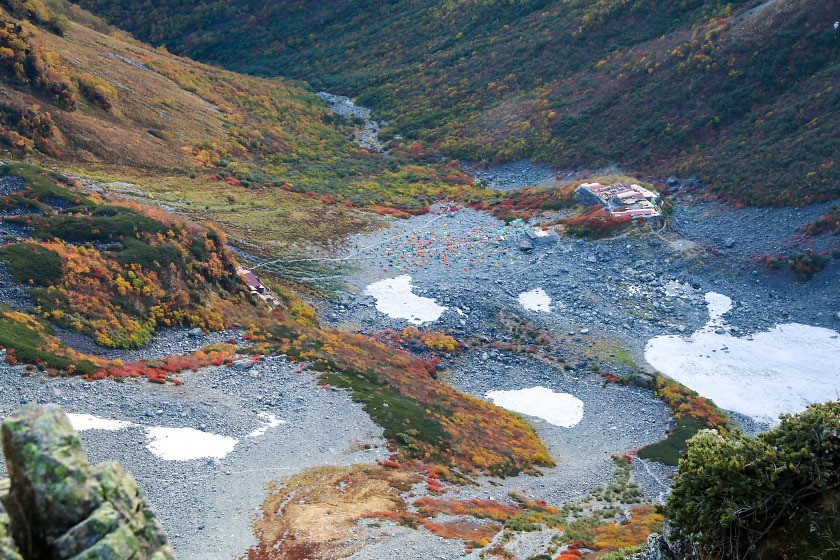
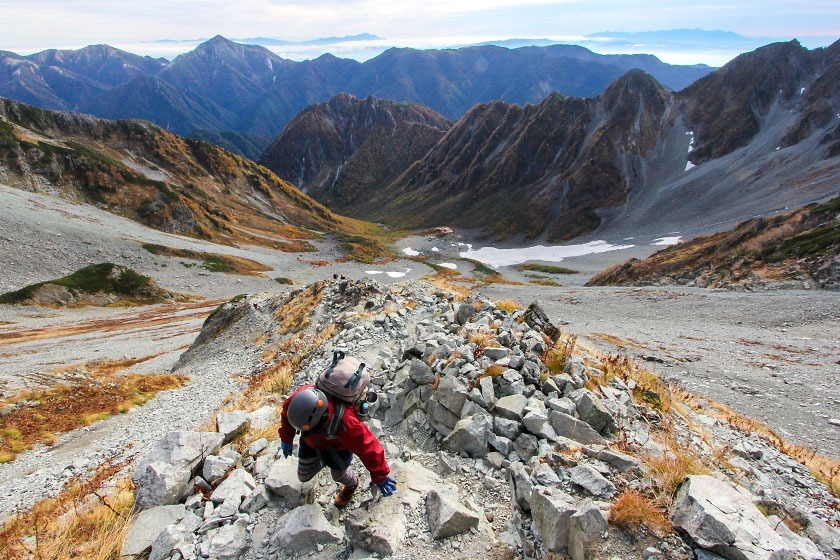
Once on the ridge, you'll find yourself at the Hotaka-dake Sanso mountain hut. Located at the col (the lowest point) between Mt. Karasawa-dake and Mt. Okuhotaka-dake, this lodge is a perfect place to stay the night before venturing along the ridge line to the nearby peaks.
Like the Karasawa huts, Hotaka-dake Sanso offers futons and hot meals for hikers (6600 yen no meals; 9800 yen with 2 meals) and tent sites (1000 yen per person).
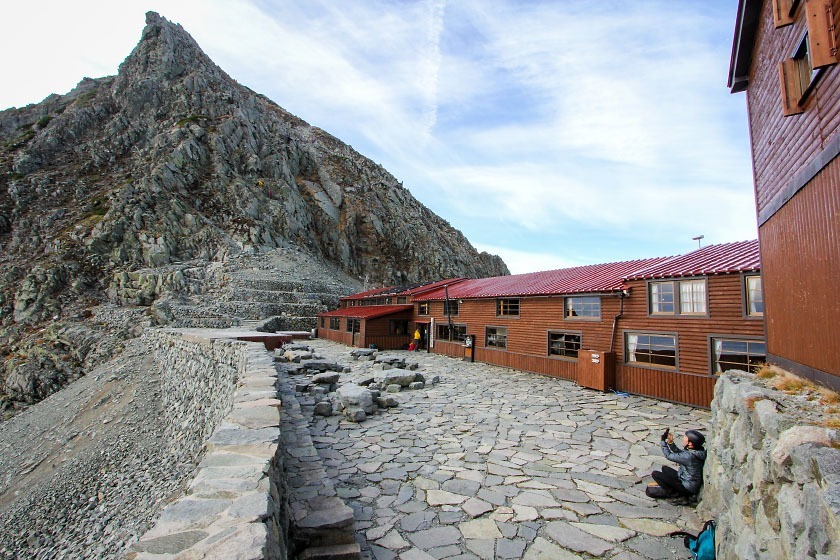
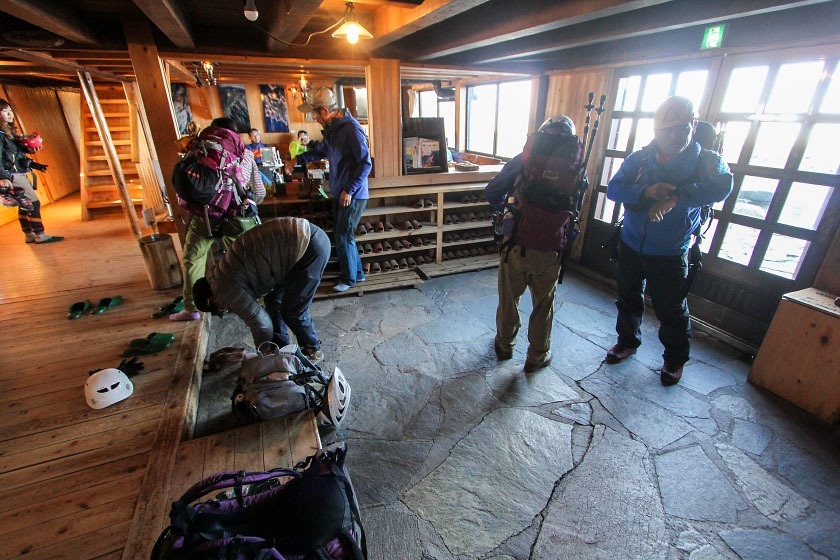
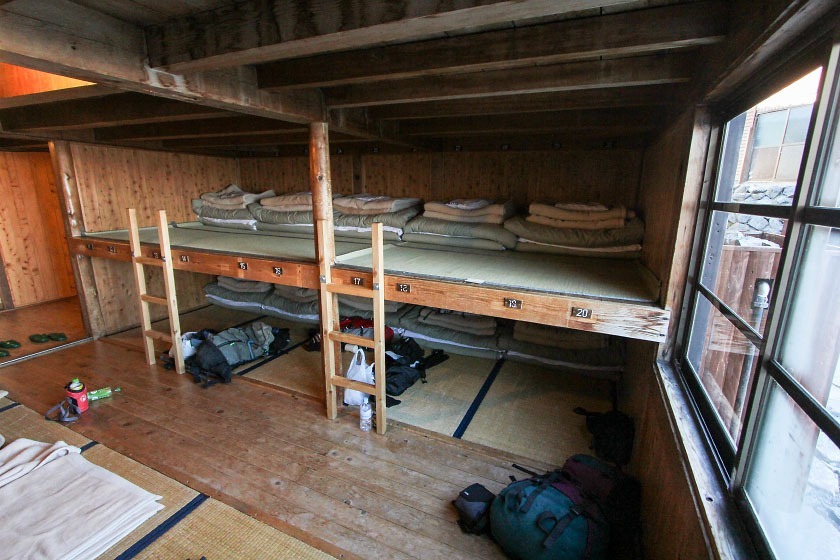
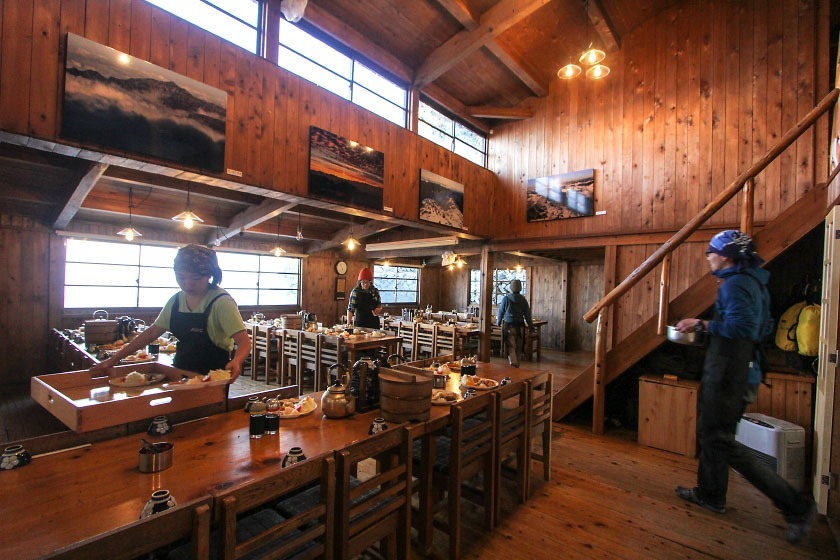
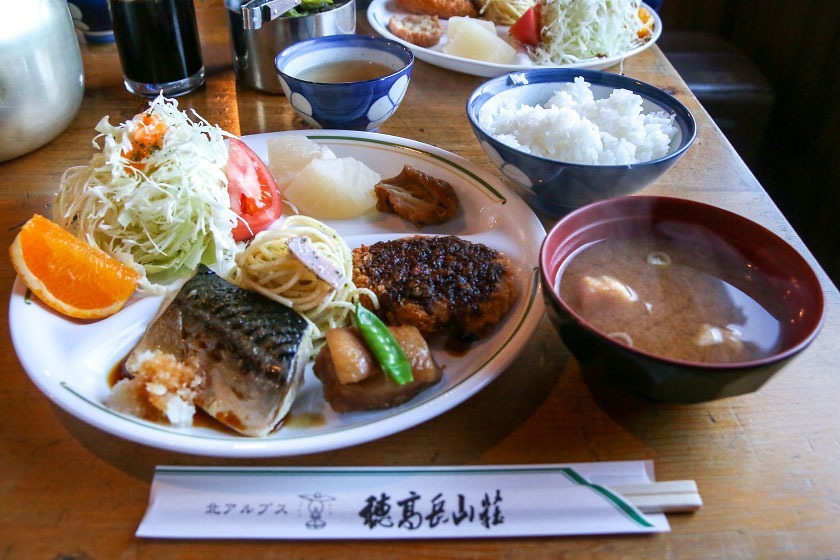
And of course, one of the nicest perks to staying overnight on the ridge line is the chance to catch the sunset (and/or the sunrise!) from the top of a nearby peak. With the added bonus of the autumn air being cool, crisp and usually relatively less cloudy than in the summer/spring, autumn color season is a perfect time to go for this unique experience.
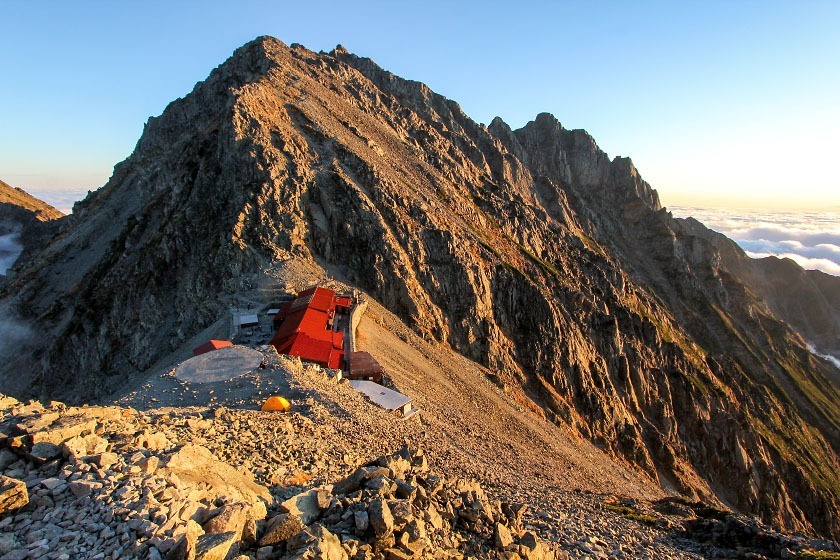
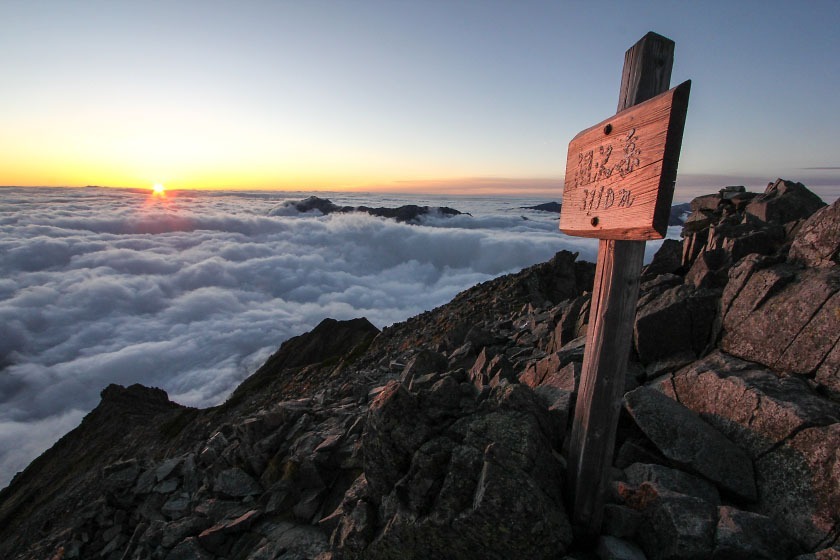
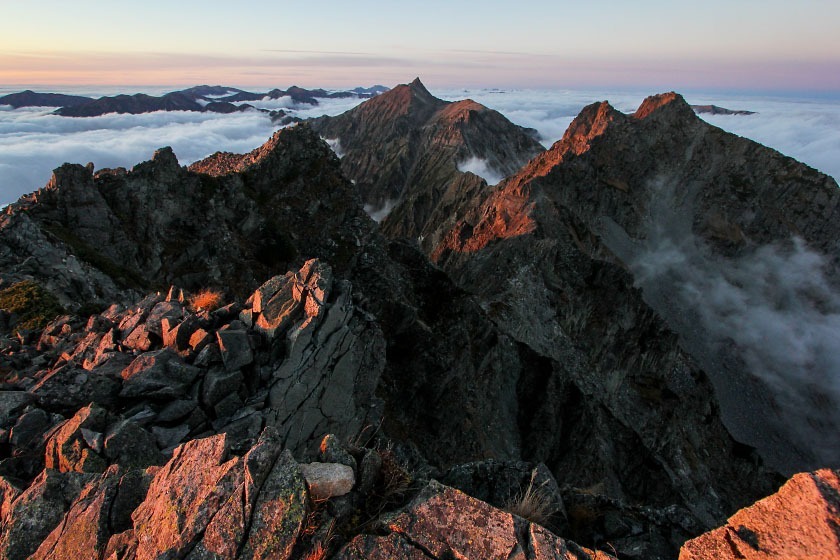
This report was done as a portion of a three-day hike traversing much of the length of the Hotaka massif, including the peaks of Japan's third and fifth tallest peaks. To see the full hike, check back soon on our outdoor adventure blog series, Among the Peaks!
Questions? Ask in our forum.

